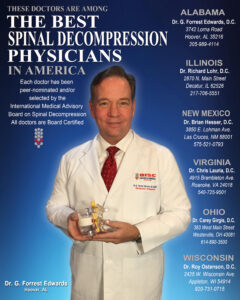
Perfecting Posture: Dr. Gary Edwards Explores Strategies for Developing and Maintaining Good Posture
Good posture is not just a static position; it’s a dynamic alignment that contributes to overall well-being. Dr Gary Edwards provides valuable insights into the proactive measures individuals can take to develop and sustain good posture. In this article, we delve into strategies that empower individuals to cultivate habits supporting optimal spinal alignment and balanced muscle engagement.
Understanding the Fundamentals
Ergonomics in Daily Activities:
Dr. Gary Edwards emphasizes the importance of incorporating ergonomic practices into daily life. Whether sitting at a desk, standing, or lifting objects, individuals can develop good posture habits by ensuring their activities align with ergonomic principles. This includes maintaining a neutral spine position, adjusting chair and desk heights, and lifting objects with proper body mechanics.
Body Awareness and Self-Checks:
Developing body awareness is a key component in the journey toward good posture. Dr. Edwards suggests regular self-checks to assess body positioning during various activities. This mindfulness helps individuals identify and correct posture deviations, fostering a habit of conscious alignment.
Strengthening Core Muscles
Targeted Exercises for Core Strength:
Dr Gary Edwards highlights the role of core muscles in supporting good posture. Engaging in targeted exercises that strengthen the core, including abdominal and back muscles, contributes to a stable and well-supported spine. Incorporating exercises like planks, bridges, and back extensions can enhance core strength and promote better posture.
Yoga and Pilates Practices:
Practices such as yoga and Pilates focus on building core strength and enhancing flexibility. Dr. Edwards explores how incorporating these activities into a regular routine not only strengthens the core muscles but also encourages mindful movements, supporting overall posture improvement.
Posture-Specific Stretching
Stretching for Flexibility:
Dr. Gary Edwards discusses the importance of incorporating stretching exercises to improve flexibility. Targeted stretches for muscle groups prone to tightness, such as the chest, hip flexors, and hamstrings, help individuals achieve a broader range of motion. Improved flexibility contributes to maintaining good posture throughout various activities.
Dynamic Warm-Up Routines:
Before engaging in physical activities, Dr. Edwards recommends dynamic warm-up routines that include stretches promoting joint mobility and muscle flexibility. These pre-activity stretches prepare the body for movement, reducing the risk of stiffness and supporting optimal posture during exercise.
Mind-Body Practices
Mindfulness and Posture:
Dr. Gary Edwards explores the connection between mindfulness practices and good posture. Techniques such as mindfulness meditation can enhance body awareness and encourage individuals to be present in their movements. Mindful posture checks throughout the day promote the habit of conscious alignment.
Alexander Technique and Feldenkrais Method:
Dr. Edwards introduces the Alexander Technique and Feldenkrais Method as alternative approaches to posture improvement. These methods focus on retraining habitual movement patterns, helping individuals become more aware of their body mechanics and fostering positive changes in posture.
Professional Guidance
Consulting with Posture Experts:
Dr. Gary Edwards emphasizes the value of seeking professional guidance for posture improvement. Individuals can consult with experts, including physical therapists or chiropractors, who can assess their unique needs and provide personalized strategies for developing and maintaining good posture.
Utilizing Posture-Correcting Tools:
In the modern age, there are various tools and technologies designed to support good posture. Dr. Edwards discusses the use of ergonomic chairs, lumbar supports, and wearable devices that provide real-time feedback on posture. These tools can be valuable aids in developing and reinforcing good posture habits.
Conclusion: Empowering Posture Habits
In conclusion, Dr Gary Edwards encourages individuals to approach posture improvement as a holistic journey that involves awareness, targeted exercises, and, when needed, professional guidance. By incorporating these strategies into daily life, individuals can develop and maintain good posture, fostering musculoskeletal health and overall well-being.